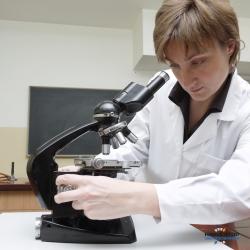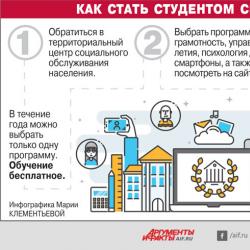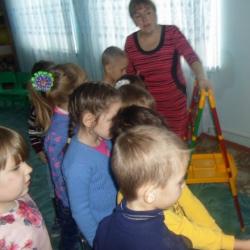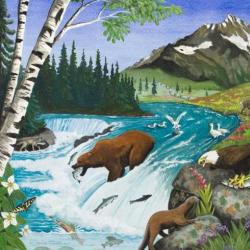Why is snow dirty? Topic: “Why can’t you eat snow? Melting of clean and dirty snow on the street
The purpose of this simple experiment was to show children what snow really is, and how much dirt it contains, despite its apparent purity and whiteness. We, adults, know firsthand how in childhood you want to lick an icicle and make ice cream out of snow! So I decided to carry out this experiment with my children, hoping that if they suddenly want to crunch on another icicle, maybe they will remember our activities, the dirty snowy water and still will not eat this nasty snow.
Snow is a form of precipitation consisting of small ice crystals. It is formed when microscopic water droplets in clouds are attracted to dust particles and freeze. (So that’s why the snow is already falling dirty from above.)
Outside, after a recent snowfall, we collected a bucket of what we thought was the cleanest snow.
We brought the snow home and waited for it to melt.
But the snow melted very slowly.

We decided to speed up the process by placing our bucket in a bowl of warm water. And the process went clearly faster.

When all the snow finally turned into water, we poured it into a jar.
And this is what we saw:

The melt water was cloudy and dirty in appearance.
It’s disgusting to drink such water, my little researchers concluded. Q.E.D!
We also talked about filters and even decided to try to make our own filter and looked at the example of our dirty water to see how filters work. We passed water through a cotton pad, which we placed in a funnel. The dirt remained on the cotton wool, and the resulting water was clearly cleaner than before filtration. This is how dirty the water turned out to be:


PS: While doing this experiment, we drew attention to another completely obvious, but important point. We brought home a whole bucket of snow, and after it melted it turned out to be not a bucket at all, but a small jar. And we talked about the fact that snow is fluffy, it consists of snowflakes that do not lie close to each other, there is air between them, and that each snowflake is a very, very small drop of water. And besides, it turns out that snowflakes are 95% air! This is why snowflakes fall so slowly and snow has very low density.
© "My Children"
When using materials from this article, an active link to the site is required.
Featured articles:
Many people are interested in the question of which snow melts faster: clean or dirty? By the way, there are at least three correct answers to this question.
To find the answer to the question of which snow melts faster: clean or dirty, you need to understand what the subject of discussion itself is.
Looking at snowflakes, everyone can notice that they consist of small ice needles that stick together into some kind of geometrically correct structure. Why this happens is a completely different question. Now it is important to understand that snow, in its chemical composition, is water in a solid (frozen) state.
What is the melting point of ice and snow?
There is a second important factor necessary when searching for an answer to the question of which snow melts faster: clean or dirty. This is ice and snow.
It is known that water changes from its solid state to liquid at 0 degrees Celsius. It was this point that was taken as a reference point when compiling the degree scale that we all use in practical life. That is, there is no surprising coincidence that ice melts at 0 degrees. It was just convenient for scientists to take this temperature as the main starting point. Just like 100 degrees Celsius is nothing more than (the transition from liquid to gaseous) of the same water. In other words, at this moment steam formation occurs. In general, this is understandable. After all, water on Earth is the very substance that we can easily observe in all three states.

This is also steam coming from the spout of the kettle, that is, gas. This is water itself, that is, liquid. This is snow with ice, that is, a solid substance.
Which snow melts faster: clean or dirty?
In this case, two more factors are important. First, where the snow is located - indoors, isolated from sunlight, or in an open area. Secondly, what is meant by the word “dirty”.
If we assume that snow gets dirty with earth, sand or other solids that cannot dissolve in water, then there will be one answer to the question of which snow melts faster: clean or dirty. But if we talk about a mixture of snow with soluble substances, such as salts, then the answer will be different. This happens because salt solutions have a lower freezing point.
That is, snow mixed with salt at 0 degrees begins to melt, since at the point of contact the substances - water and salt - are mixed. And the brine solution can be in a solid state at a temperature slightly lower than 0 degrees.

Now everyone understands why salt is sprinkled on the ice on the roads in winter? So that it melts and loses its hardness and, as a result, slipperiness.
Dirty and clean snow in the room
But let’s say we are not talking about snow sprinkled with salt, but about one on which coal or earth was poured. How will this fact affect the rate of its melting?
If we talk from the point of view of the melting point, then nothing. Clean and dirty snow brought from the street into the room will turn into water at the same time. Since the temperature of transition of both from solid to liquid is the same.
Melting of clean and dirty snow on the street
But here the question arises: “Why in the spring is snow that interferes with pedestrians sprinkled with sand and earth? And why is dirty snow faster than clean snow?”
The answer is simple: this happens for the reason that white color repels the sun's rays, and dark color attracts. Consequently, dirty snow heats up faster than white, clean snow.

It turns out that janitors also need to be at least somewhat familiar with the basics of physics and chemistry in order to do their job well. After all, it was no other than a competent snow remover who came up with the idea of sprinkling the ice paths with salt and sand in order to quickly and easily bring his area into proper order.
The text of the work is posted without images and formulas.
The full version of the work is available in the "Work Files" tab in PDF format
Introduction
White, delicious snow is falling,
Goes straight into your mouth.
If I really want to,
I'll swallow the snow all at once!
And then what will happen, brothers -
No sleigh rides
And there are no snowdrifts to be seen,
And don't play in the snow,
And don't go skiing!
It will be bad for everyone without snow!
That's why, friends,
I probably won’t eat the snow!
M. Druzhinina
We live in the city of Yekaterinburg, where winter is usually cold and snowy. It turns out that we have been observing snow for a very long time, and when we look at it, it attracts us with its whiteness and sparkling shine. You really want to touch it, roll snowballs, and sometimes even try what it tastes like. After all, it looks very appetizing! And I ate it with pleasure! But is it possible to do this?
I wondered why adults at school and parents at home forbid eating such pure, white snow?
This question interests me and many children, and this is why relevance of the research problem, and for this reason I, together with my friend, decided to devote our research to snow.
We have the following problem: Why can’t you eat snow, because it looks so clean, white and appetizing?
We assumed ( hypothesis) that you can’t eat snow because it’s not as clean as it seems.
The purpose of our research:
find out why snow appears white,
find out why you can't eat snow,
To achieve these goals, we set ourselves the following tasks:
find out what snow is;
study some properties of snow
determine the purity of snow in different places;
prepare prototypes for the guys
The object of our research it started snowing.
Subject of research became the determination of the purity of snow taken in different places.
When solving research problems, a complex was used methods:
studying information on this topic;
observations;
conducting experiments;
analysis of the results obtained.
To answer all the questions, we worked according to the following plan:
discussed the topic with mothers,
began to look for useful information,
collected snow samples in various places,
determined the purity of snow in various places,
made a presentation on research activities
designed prototypes of snow purity and showed them to the guys
The project was implemented in several stages:
First stage- studying literature and information on the Internet on the research problem, identifying the main directions of research.
Second phase- specifying the purpose and objectives of the research, conducting experiments to study the properties of snow, analyzing the results, generalizing.
Third stage- conducting experiments to determine the purity of snow, analyzing the results, generalizing.
Fourth stage- generalization and systematization of research results, design of research text, development of presentation.
Product The studies are experimental samples for children of primary school age, which will prove that snow should not be eaten under any circumstances!
1. Theoretical part.
1.1. What is snow?
I asked everyone: Why is there snow in winter? Why is it white, who made it in the sky?
M. Korneeva
Every season is interesting and beautiful in its own way. But the most magical time of the year is winter. In winter, snow falls and the dirty, dull earth, as if by magic, turns into a magnificent white carpet. This means that snow is a miracle of nature.
After studying various sources (dictionaries, the Internet), we found out the meaning of the word “snow”.
So in Ozhegov’s explanatory dictionary it says:
Snow is precipitation in the form of white flakes, which are ice crystals, as well as a continuous mass of this precipitation that covers the ground in winter.
The Soviet Encyclopedic Dictionary says:
Snow is solid precipitation consisting of ice crystals of various shapes - snowflakes, mainly hexagonal plates and six-rayed stars; falls from clouds at air temperatures below 0 0 C.
Snow is not just frozen water. Snow forms when water vapor in the atmosphere freezes. These are millions of ice crystals that retain the shape they obtained when frozen. First, tiny crystals appear, clean and transparent. (The crystals that make up snowflakes have a certain shape. This is either a six-pointed star, or a thin plate shaped like a hexagon, since the main water crystal has the shape of a regular hexagon in the plane.) Following the air currents, they will mix in the air in in all directions. Gradually, these crystals “stick” to each other until there are a hundred or even more of them. When the size of the frozen ice floes turns out to be large enough, they begin to slowly sink to the ground.
2. Practical part.
2.1. It's no secret that children, and even me, eat snow. But is it possible to do this?
My friend and I wondered what the students in our classes thought about this; it turned out that the guys know that you can’t eat snow if it’s dirty, but if it looks white and clean, then you can try it.
Conclusion: Primary school students know that they cannot eat snow because it is dirty (it can hurt their stomach) and because it is cold (it can hurt their throat). But the guys tried or could try to eat the snow if it looked clean.
2.2. Study of snow purity.
We decided to check whether it is possible to eat snow that has fallen on the ground (instead of water when you are really thirsty)? After all, he is so white! Is it clean enough for this? Where is the purest snow?
We carried out some simple experiments to find out the purity of snow.
We took snow samples in seven different places:
Prototype No. 1 “by the road”
Prototype No. 2 “in the courtyard of the house”
Prototype No. 3 “in the park”
Prototype No. 4 “in the forest”
Prototype No. 5 "near the school"
Prototype No. 6 "at the curb"
Prototype No. 7 “from the depths”
Even at first glance, the snow was different, although in areas No. 2, No. 3 and No. 4 the snow was very white and clean. My friend and I brought all the samples we took into the heat and waited for it to melt. After this, snow water from the cups was poured through the filter.
The filters showed that the snow from the side of the road was the dirtiest. This can be seen even with the naked eye! Upon closer examination, using a microscope, we discovered that this snow contains soot from cars, sand, grease stains and other substances. All this dirt gets onto the snow from the roadway from cars passing by.
The cleanest snow is from the park and forest, but even here, particles of dirt, needles, and small debris are visible on the filter.
The snow near the school and in the yard is also dirty. There was even some fat, wood chips, and animal hair floating on the surface of the cup. Here you can remember about cats and dogs! (But that's a completely different story.)
Conclusion: This means that since melt water is dirty, then the snow is dirty. If snow contains such substances, it, of course, cannot be eaten. If you try to eat such snow, you can get poisoned or get a dangerous infection.
Conclusion.
Thanks to snow, we play snowballs, build snow towns, ski and sled. New Year's holidays are simply unthinkable without snow. While working on this project, we realized that snow still holds many secrets. We made observations, comparisons and drew conclusions. We got acquainted with the amazing properties of snow and learned that:
Snow is a type of precipitation falling on the earth's surface, consisting of small ice crystals.
Snow- an accumulator of pollutants, so you cannot eat snow or drink melt water.
The results of our research showed that there is no completely pure snow. Only outwardly does the snow appear white and clean. In fact, it contains dirty impurities. This means that eating snow is dangerous for our health!
Thus, the hypothesis: that you can’t eat snow because it’s not as pure as it seems - I found my confirmation.
Practical significance of the work.
My friend and I have learned the main rule for ourselves: you should never eat snow! We presented the results of the research in the form of a presentation and will definitely share the results of our work with the students of our school, and we also got acquainted with various sources of information, expanded our knowledge, and gained useful experience in research activities.
Perspective: This topic was very interesting to us. And we would like to know what benefits snow brings, how people use snow for their own purposes.
List of sources.
Bibliography.
1. Large schoolchild encyclopedia “Planet Earth”. "Publishing house Rosman-Press", A. Yu. Biryukova. 2001
2. “Everything about everything” - M. 6 CJSC “Planet of Childhood”, LLC Astrel Publishing House, AST, A. Bragin. 2001
3. Children's encyclopedia. "I'm exploring the world." - M., AST Publishing House LLC. V. A. Markin. 2001
4. Efremova T.I. New dictionary of the Russian language. Explanatory and word-formative. -M.: Russian language, 2000.
5. Mishina A.K. What? For what? Why? Big book of questions and answers. -M.: EKSMO-Press, 2002. -512 p.
6. Ozhegov S.I. “Dictionary of the Russian language” M. “Russian language”, 1981.
7. “Soviet Encyclopedic Dictionary.”/ Ch. ed. A.M. Prokhorov. - M. “Soviet Encyclopedia”, 1984
Internet resources.
http://nsportal.ru/detskiy-sad/okruzhayushchiy-http://ru.wikipedia.org/wiki/%C2%FB%F5%EB%EE%EF%ED%FB%E5_%E3%E
http://autonotes.info/vyhlopnye-gazy/
http://www.slideboom.com/presentations/780777/%
https://globallab.org/ru/project/cover/chist_li_belyi_sneg.html#.VwAETnoppqA
KSU "Suburban Secondary School"
Zhitikarinsky district
Kostanay region
KSU "Suburban Secondary School"
Year of implementation: 2015
Abstract …………………………………………………………… 3
Introduction………………………….………………………. 4
Preparing for the study
1. Collection of information………………………………………………………. 6
1.2. Searching for information on the Internet
1.3. Meeting with the school health worker
2. Conducting the study…………………………… 7
Description of the experience:
2.1. Snow collection from different places
2.2. Samples of melted snow
2.3. Studying the environmental situation around the school ..... 8
3. Final stage……………………………………. 9
Research results
4. Literature ………………………………………………… 10
annotation
The research work is devoted to a current topic - the problem of the health of children of primary school age, since many of them often get sick sore throat, colds. In this work, literature on the topic was studied, observations and experiments were carried out to study snow contamination and the ecological situation of the area, and answers were given to the question “Why can’t you eat snow?”
Research “Why can’t you eat snow?”
Listen to the story that led us to create our research paper
Some children like to play games while walking, cut shapes out of snow, and taste the snow. During play, adults often warn us that we should not “eat” snow pies. But I thought: “Why can’t you eat snow? After all, we don’t eat a lot of it.” But the teacher told us that the snow is not only cold, but also dirty. Is the snow really so dirty, because it seems clean? I asked her: “What if the snow that fell just today is clean, and you can eat it and nothing will happen to you. But what if?" Then the teacher looked at us and said: “It’s very good that you have such questions. Let's find out all this. How many of you want to play the role of a scientist who studies everything and looks for answers to questions?” I immediately wanted to become a scientist.
Problem. All children love to eat snow. All adults unanimously say that you can’t eat snow. Need to find out why?
Purpose of the study: find out if there is clean snow that would be safe for human health.
Research objectives:
1. Collect information about the cleanliness and safety of snow from books, magazines, the Internet, and meetings with specialists.
2. Conduct experiments to determine the purity of snow.
3. Study the ecological situation of our area, which can affect the purity of the snow.
Hypothesis: freshly fallen snow is clean and safe for human health.
Research stage: With February 10 By February 17 2015.
Research methods:
1. Studying literature on this topic.
2. Observations.
3. Conducting experiments.
4. Analysis of the results obtained.
Stage 1. Collection of information.
Target: collect information from various sources about the degree of snow contamination.
1.1.Studying children's nonfiction literature.
We started by remembering how snow is made. The schoolchild's encyclopedia says that snow is many, many snowflakes together. There is a lot of dirt and microbes found on the ground even in winter. We assumed that particles of dirt and microbes could hide between the snowflakes and not be visible. But the snowflakes that are just falling to us from the sky are probably clean. Need to check!
1.2.Searching for information on the Internet.
On the Internet we looked at pictures of how dirty snow can be and what microbes can be found in it. For example, I learned that Koch's wand, because of which a person can even die, can live even in the snow.
1.3.Meeting with medical workers.
I met with the school nurse, Svetlana Viktorovna Dmitrieva. Listen to what she had to say. (VIDEO)
Found out: The snow is not only cold, it also contains many different microbes and dirt.
Stage 2. Experimental.
Target: check and prove experimentally that the snow is dirty.
Description of the experience.
2.1 . Collect snow samples from different places on the site:
· Sample No. 1- snow from the field.
· Sample No. 2– snow near the trees.
· Sample No. 3– snow near the road along which cars were driving.
· Sample No. 4- freshly fallen snow.
2.2 . Place snow samples in disposable cups, numbering them. When the snow melts, examine the snow water.
In cups No. 1, 2, 3 sediment is visible at the bottom: particles of dirt, sand, even seeds. Where did they come from? Small particles of dirt were hidden between the snowflakes. When the snow melted, the dirt became visible.
In a glass №4 With freshly fallen snow, the water is clear. Perhaps the snow is pure?
Using a microscope on a sample droplet №4 we saw small particles of dust and dirt that were not visible at first.
explained that these could be small particles of smoke and gas that stick to snowflakes in the air. Why is there so much dirt in the air?
2.3. Study of the environmental situation around the school.
There is a highway not far from the school. There are many cars driving there, the exhaust gases of which enter the air. Also not far from us there are quarries, factories for the extraction and processing of asbestos and gold. There is a boiler room near the school. And falling snowflakes catch all these particles of smoke and dirt on their way. That's why even fresh snow turned out to be dirty.
Conclusion: all snow samples are dirty, that is, there is no pure snow.
Stage 3. Results of the research work. Refuting the hypothesis.
As a result of our experiments and observations, we refuted the initial hypothesis according to which there is pure snow. During our research, we studied samples of snow from places where children can put it in their mouths. Dirt and smoke particles were found in varying amounts in each sample. We have empirically verified that there is no snow that you can eat without fear of getting sick. If you want to drink on the street, no need to be lazy. You need to go into the house and drink clean water. And if you see kids trying to eat snow, you need to tell them - there is no such thing as pure snow. Now we know this for sure.
Literature:
1. Encyclopedia of a preschooler. M., Rosman, 2007.
2. Living world. Encyclopedia. M., Rosman, 2000.
3. Science. Encyclopedia. M., Rosman, 2004.
4. www. bestforkids. ru All the best for children.






